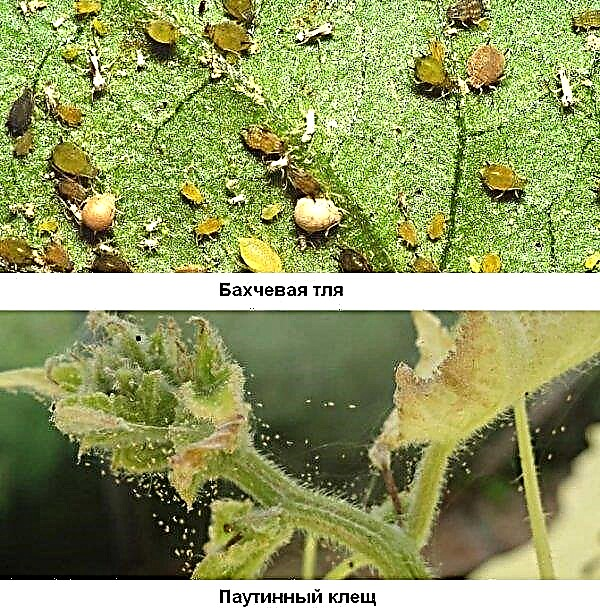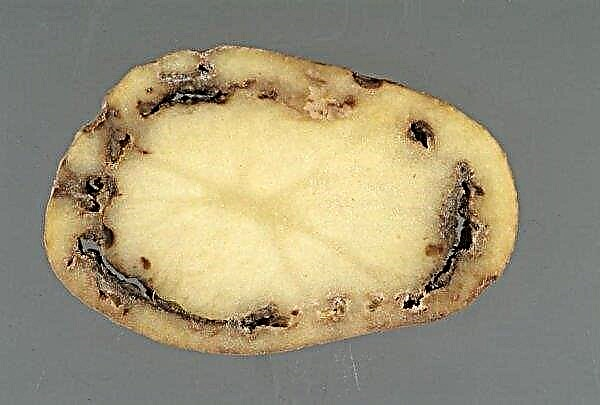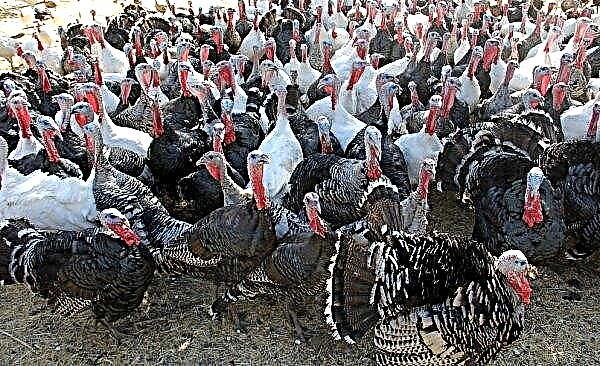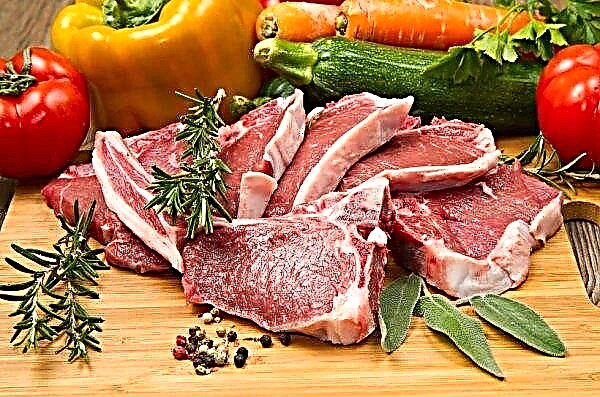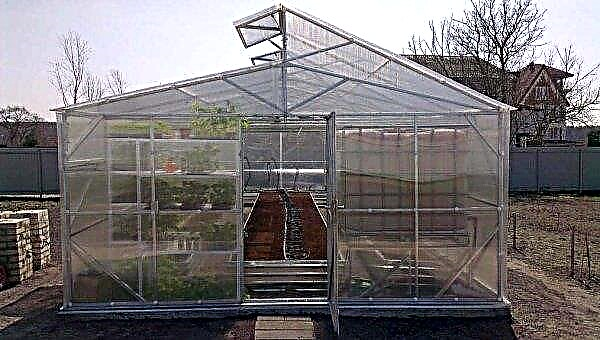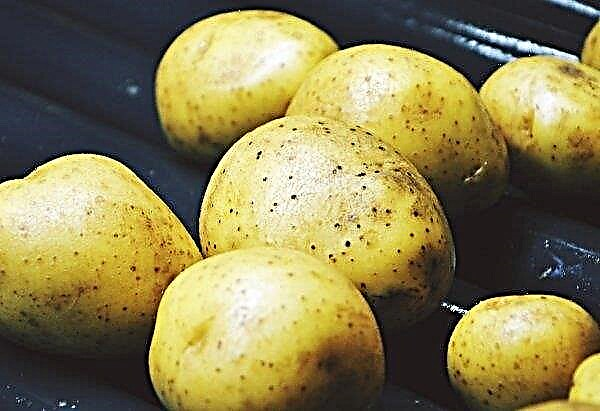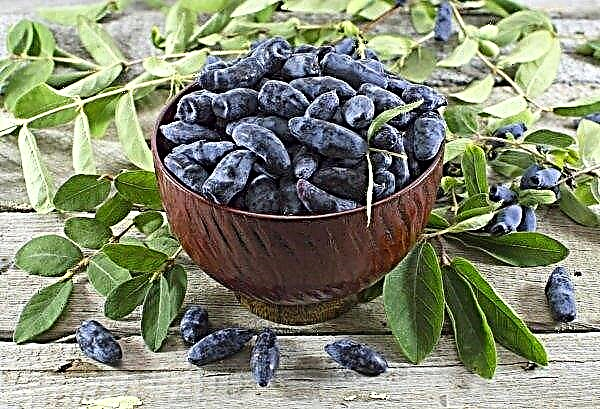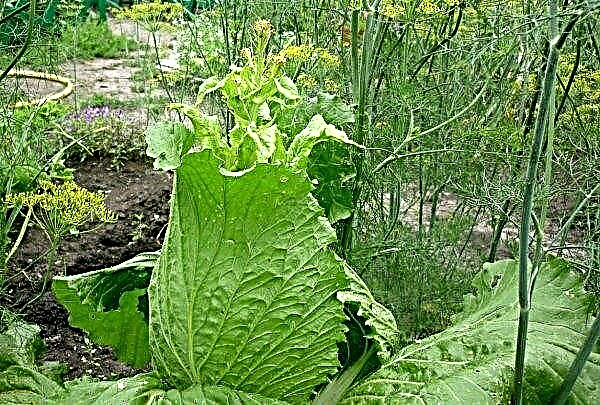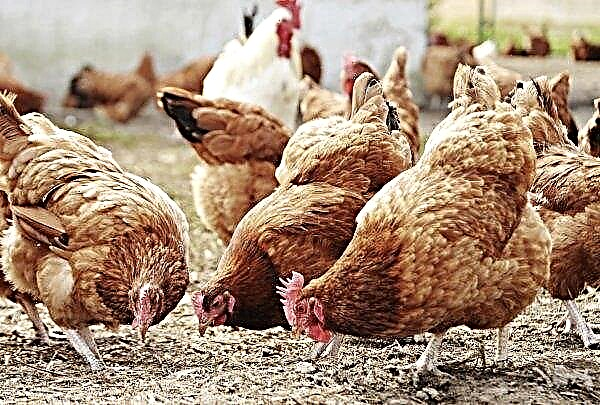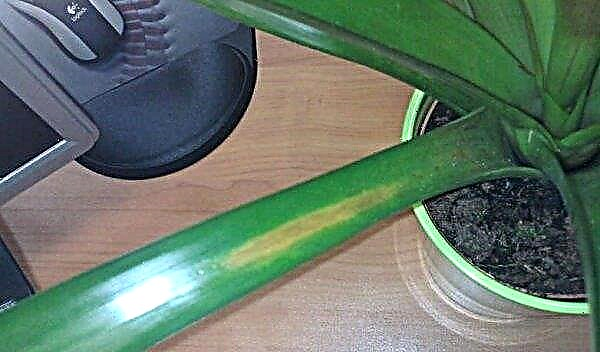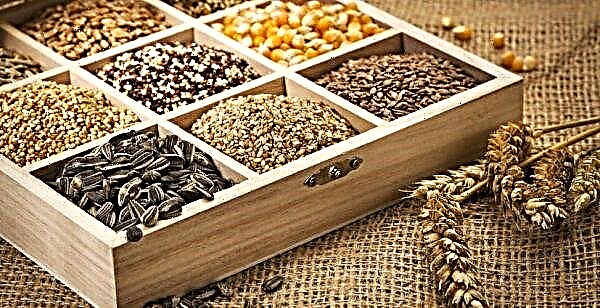Scots pine is one of the most famous representatives of gymnosperms. There are a large number of different species of this tree, which are found mainly in Russia, Europe and North America, and the pine life cycle consists of several phases. Detailed botanical characteristics of the tree and a description of all stages of its development are presented later in the article.
Biological description of pine
The Pine belongs to the kingdom of the Plant, the Conifers department and the Pine family. It has a characteristic aroma and is an evergreen tree that grows especially actively in height for one century.
Did you know? Pine wood is used not only in the woodworking industry. A substitute for genuine leather and artificial silk are also made from it.
Botanical description of pine:
- The tree reaches a height of 35–40 m, but some specimens can grow up to 50 m.
- Pine roots are ductile. In dry soil, they can go into the ground to a depth of 8 m, and in conditions of high humidity they are parallel to the surface of the earth within a radius of 10 m from the tree trunk.
- The diameter of the direct pine trunk is 0.6–1.2 m. Its upper part is branched.
- The surface of the lower part of the trunk is covered with brown bark with small cracks. On the top of the tree, the bark is thinner and tinted.
- Pine branches form a thick cone-shaped crown.
- The lateral shoots of the tree are densely dotted with pointed green needles, which are a substitute for leaves. They are dense and have a length of up to 7 cm and are arranged in pairs.
- The pine fruit is a lump ripening in the second year after emergence. It has the shape of a cone, whose diameter is about 2–4 cm.
Life cycle stages
Each pine tree goes through a full life cycle, which begins with seeds and ends with an adult tree. In the process of such development, a seedling is first formed from seeds, which in 2-3 years becomes a young tree, growing in height for many years.
To ensure further reproduction, cones with pollen and seed primordia are formed annually on a pine tree. As a result of pollination, fertilization occurs, which ends with the formation of a new portion of seed material and the entire pine cycle is repeated again. Each stage of this process is described in detail later in the article.
Seeds
Pine seeds are inside the female cones and ripen for 20 months after pollination. With their help, the tree reproduces.
Important! Seed material of pine remains viable for 7 years. It grows best on moderately moist and fertile soil.
The main characteristics of pine seeds:
- have a rounded elongated shape;
- reach a diameter of 4-5 mm;
- covered with a dense black shell;
- have a “wing” - membranous outgrowth up to 2 cm long.

Seedling
Once in the soil, ripened seeds germinate with the onset of spring heat, giving life to a new tree. First, a seedling is formed from the seed.
Did you know? The tallest representative of pine trees is the Lambert pine. These trees can reach a height of 70 m and grow in the United States and Canada.
The stages of its development are listed below:
- The pine seed that has entered the ground actively absorbs water and swells.
- The outer peel is torn, and the root bud located on the lower part of the seed is directed towards the ground.
- The embryonic shoot begins to lengthen. As a result of this, the cotyledons located at its top rise above the surface of the soil.
- The remaining supply of nutrients in the seed is completely spent on the growth and development of the young seedling.
- A vertical young shoot is formed with young needle-shaped leaves arranged in a spiral.
- After reaching the age of two, small seedless flakes can be seen on the shoots of the seedling. Shortened shoots are formed in their sinuses, on which two needles grow. This structure is also characteristic of adult pine.

Bumps
In spring, cones are formed on an adult tree: female and male. They differ from each other in appearance and contain special organs that produce disputes - sporangia. Here, the formation of female and male disputes takes place, taking part in the fertilization process in the future. A description of each type of pine cones is presented below.
 1 - a branch with a cone and a collection of microstrobils; 2 - a young bump; 3 - mature bump; 4 - seeds; 5 - a branch with young shoots.
1 - a branch with a cone and a collection of microstrobils; 2 - a young bump; 3 - mature bump; 4 - seeds; 5 - a branch with young shoots.
Women
The second name for female pine cones is macrostrobils. They grow in groups of 2-3 pcs. in the upper part of the branches or individually and contain female spores that remain inside after fertilization, forming seeds.
A detailed description of the female pine cones is presented below:
- The shape of the macrobe is conical, and its length is about 3–7 cm.
- Each cone has an axis around which there are scales of two types - integumentary and seed. They are called megasporophylls and are arranged in a spiral.
- On the outer surface of the wide seminal flakes (near the base) is a pair of seminal primordia. From above they are covered with smaller integumentary scales.
- Each seed primordium consists of nucellus (megasporogenous tissue) and integumentary tissue (integument).
- On the upper edge of the seed germ is a micropile - a small hole designed to pass male pollen.
- During the first year, female cones are painted red, and in the second year they turn green. By the time of ripening and ejection of seeds, the cones become brown and fall from the tree.

Men's
Male cones are located mainly near the base of young pine shoots and are called strobiles. Inside them contains pollen, which is used for fertilization.
Important! Pine begins to bear fruit from the age of 15. Abundant harvests of cones are observed every 5–7 years.
Description of male cones is presented below:
- male strobil (microstrobil - shoot with sporangia) in the form of a spikelet is painted yellow, its dimensions are 8-12 mm.
- The male cone is the axis around which the microsporophylls (spore-bearing leaves) are arranged in a spiral.
- On the lower part of the surface of each microsporophyll there is a pair of special chambers with pollen - microsporangia.
- The pollen chambers contain microspores. As a result of the process of mitosis (indirect division), they form pollen.
- Each individual pollen grain consists of four cells - a vegetative, generative, and two protally. The latter are needed exclusively for the development of vegetative and generative cells, so they disappear after they give up their resource.
- A pollen cell contains two membranes. The inner one is more subtle and is called intina, and the dense outer cover performs a protective function and is called exina.
- Each pollen grain has air sacs. They facilitate the transfer of pollen by the wind and are swellings formed in places where the exin of the cell is separated from the intina.

Pollination and Fertilization
The pollination process takes place in May. At the same time, pollen matures in the microsporangia of the male cones, and the scales of the female cones open wide, preparing to accept it.
Did you know? The longest needles are in bog pine. The length of the needles in this tree can reach 45 cm.
The pollination process consists of the following stages:
- When the pollen in the male cones is ripe, microsporangia burst and pollen grains spill out.
- The wind easily carries pollen grains, as a result of which some of them fall between the scales of female cones.
- A special sticky liquid is released from the micropile of the female cone. Pollen grains caught between the scales adhere to it and are pulled into the nucellus as a result of the drying of the liquid.
- The micropile closes, and all the scales of the female cone fit snugly together. To ensure high tightness, the surface of the macroscope is filled with resin.
 1 - female cone; 2 - seed scales with two ovules; 3 - micropile; 4 - megaspores; 5 - nucellus ovule; 6 - integument, one leaflet; 7 - nucellus forming a perisperm; 8 - archegonium; 9 - primary endosperm; 10 - male cone; 11 - microsporophyllum with two microsporangia; 12 - anteridial cell; 13 - siphonogenic cell, tube cell; 14 - sperm cell nucleus; 15 - the nucleus of the cell legs; 16 - tube cell; 17 - seed germ; 18 - primary endosperm; 19 - seed peel; 20 - cone, whose age is one year; 21 - a bump, whose age is two years.
1 - female cone; 2 - seed scales with two ovules; 3 - micropile; 4 - megaspores; 5 - nucellus ovule; 6 - integument, one leaflet; 7 - nucellus forming a perisperm; 8 - archegonium; 9 - primary endosperm; 10 - male cone; 11 - microsporophyllum with two microsporangia; 12 - anteridial cell; 13 - siphonogenic cell, tube cell; 14 - sperm cell nucleus; 15 - the nucleus of the cell legs; 16 - tube cell; 17 - seed germ; 18 - primary endosperm; 19 - seed peel; 20 - cone, whose age is one year; 21 - a bump, whose age is two years.
After the pollen grains hit the nucellus, the process of germination of the vegetative cell begins with the formation of a pollen tube. In this case, the generative pollen cell moves inside the vegetative one and slowly grows into nucellus for one calendar year.
A description of all the preparatory stages, as well as the scheme of the fertilization process are presented below:
- 30 days after pollination, division of the archesporial cell of nucellus occurs.
- 4 megaspores form, of which only one survives, located at the largest distance from the micropile.
- The remaining megaspore begins to grow 6 months after pollination. Moreover, the number of its nuclei as a result of mitotic fission increases to 2,000 pieces.
- 13 months after pollination, cell walls form inside megaspores. Cytokinesis occurs - each of the nuclei formed is localized in a separate cell.
- As a result of cytokinesis, a special haploid tissue is formed - endosperm. After another 2 months, from its cells located near the micropile, 2-3 archegonia are formed, which contain one female egg inside.
- The endosperm and archegonia form a growth (female gametophyte). By the time of its formation, the pollen tube reaches nucellus and penetrates one of the archaeonias with the egg.
- Inside the pollen tube, the generative cell is divided into sterile and spermatogenic (body cell).
- The body cell is divided into a pair of sperm, which together with the pollen tube form a male gametophyte.
- As a result of the penetration of the pollen tube into the archegonium, the cell wall is destroyed. In this case, fertilization occurs - one of the sperm combines with the egg and forms a zygote, and the second dies.
Important! The duration of the pollination process depends on weather conditions. With a sufficient amount of sun, pollen completely scatters in 3-4 days, and during rain this process takes at least a week.
Ripening female cones
After fertilization, the process of maturation of the female cone begins. This process ends with the formation of the seed and lasts six months from the moment of fertilization.

Cones ripening consists of the following stages:
- In the process of dividing the fertilized zygote, an embryo is formed that has embryonic organs - the root and shoot. At the apex of the latter are small cotyledons, which are the rudiments of future leaves.
- Endosperm is used as the nutrient membrane necessary for the development of the embryo.
- The formation of the outer shell of the seed from the integumentary tissue of the seed germ occurs.
- At the end of winter, the cones open and the seeds are freely sown out, spreading over long distances along with the wind. The ripe cones show off on the ground.
The life of every pine begins from a small seed sprouted in the soil. After that, the tree grows over many years, forming annually new portions of cones. The complex process of fertilization and ripening of seeds lasts for 20 months from the moment of pollination, ensuring the further spread of pine in the surrounding area.

